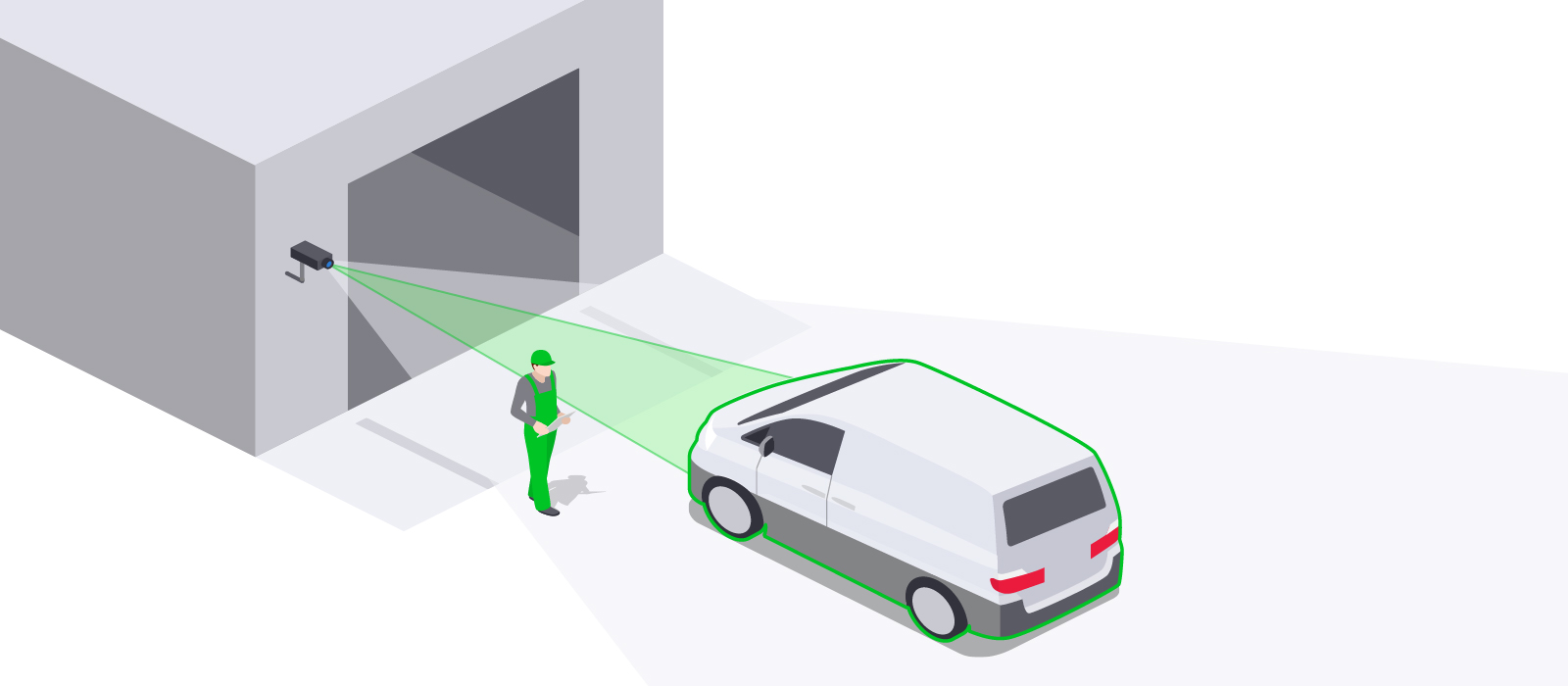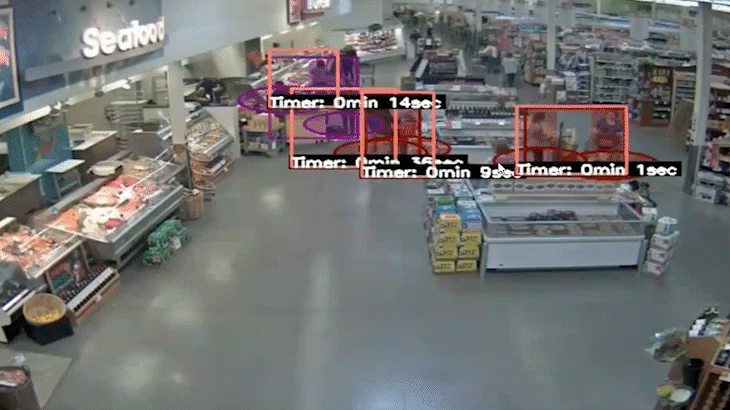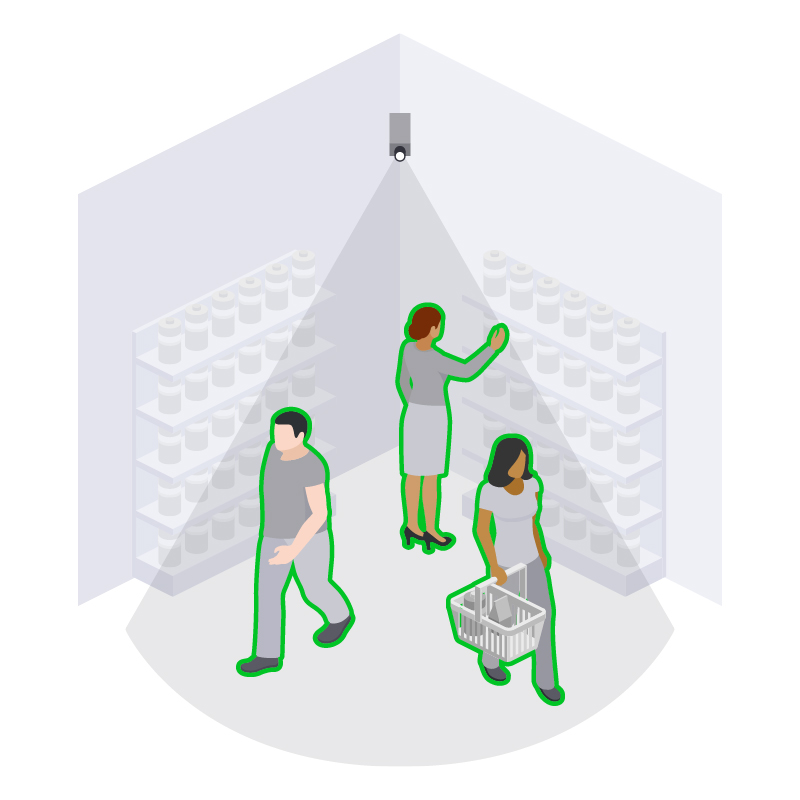National retailer: Boost retail revenue and improve customer engagement with IoT
A national retailer combined Lexmark’s IoT solution with its existing tracking methods to find ways to encourage customers to stay on site and complete purchases.
May 15, 2024

Visible benefits
Monitoring customer behavior at its outlets enabled this retailer to quantify the impact of customer interaction and to adjust processes to:
- Engage customers earlier
- Reduce customer attrition
- Improve productivity
- Increase sales
- Establish new KPIs
Why Optra?
Lexmark’s Optra Edge technology worked with existing cameras to capture data on how customers engaged with the retail offering — arrival, time on site, wait times — and to turn this into useful performance metrics.
- Integrates with existing infrastructure
- AI applications generate quantifiable data
- Real-time actionable insights
- Central visibility across retail operations
- Easy to scale across multiple outlets

Apply Lexmark’s IoT solution for retail metrics to:
- Reduce wait times
- Greet customers
- Increase sales
- Set KPIs
- Collaborate better
- Improve productivity
Generate extra revenue by monitoring customer behavior
A national retail organization wanted to understand how customers engaged with its current services and to use these insights to identify ways to reduce customer wait times and increase revenue.
Know your customers better
Operating across the U.S., this retailer realized that it was losing potential revenue due to customer wait times at its sites. It recognized the value of being able to track and measure how long customers were spending on their property before leaving. It also recognized that this operational data could be used to identify ways to improve efficiency and to encourage shoppers to stay and complete their purchase. A previous in-house pilot project that predated the availability of newer, more capable AI- and IoT-based technologies had generated awareness of the need but not the actionable data to deliver this value.
Using existing infrastructure
Lexmark’s Optra IoT was the ideal solution. It integrated the retailer’s existing on-site camera infrastructure — which was extensive as video coverage of the facility was necessary for health and safety and security reasons — with Lexmark’s IoT and AI offering. By removing the need for large, additional capital investment, this was a fast, effective and costoptimized solution. Setup was easy. An Optra Edge hardware device was added to the current video feed to capture existing live camera streams. AI applications then extracted and collated relevant data on wait times and time spent on the property. Tracking data was isolated from the video imagery to meet data protection requirements. This data was then transmitted in real time as user-friendly metrics to where it could be actioned by staff on site, and to corporate HQ for central analysis.
The power of AI
Using Lexmark’s vision-based AI solution improved the accuracy and integrity — and therefore the relevance — of the data captured. Training the AI model to distinguish between distinct parts of the retail experience and customer journey, data that wasn’t relevant to this project was automatically discarded. For example, when customers drove onto the facility in error or engaged with a different part of the service, the data would not be included.
Rapid, revenue-generating insights
The results quickly quantified the retail journey, providing detailed analytics into how long customers were spending on site and how long they were waiting. This data was then applied in a number of different ways to improve the offering and drive revenue. Top of these was establishing a meet-and-greet policy so that every waiting customer was personally spoken to by a staff member within a set timeframe. Creating this richer customer engagement experience delivered immediate revenue benefits, with follow-up data clearly showing that customers tended to stay in line longer and make a purchase if they’d interacted with an associate.
Lexmark’s IoT solution helped generate additional annual revenue of $50+ million.
Staff could now act on live data to engage customers and reduce wait times.
IoT data is helping generate an extra $50+ million p.a. in revenue.
Learn how you can drive business value faster than you thought possible.
‘Gamification’ engages staff
Engaging customer-facing staff throughout this wholly transparent project was a key factor in its success. The real-time tracking information from the camera feeds could be acted on immediately by associates to reduce wait times and improve sales. Lexmark installed monitors so that customer service teams could clearly see the wait times and throughput of customers alongside their own team performance via a visual interface. This introduced an element of gamification, with friendly competition encouraging collaboration around greeting shoppers and minimizing lines.
Setting new, measurable KPIs
Until now, there had been no mechanism to measure customer wait times or time spent on site and therefore no historical data existed for comparison or to measure improvement. A direct benefit of this project was that benchmarking KPIs could now be put in place and used to track and improve customer engagement levels, reduce customer attrition and monitor throughput gains.
Central operational visibility
The retail operational data also provided central visibility into performance across individual sites. It was now possible to see how an outlet was performing in real time and also to gather cumulative and comparative data across multiple sites to identify trends and anomalies. This would make it easier for corporate HQ to validate any new policies were being implemented, adhered to and were effective.

A scalable solution
Lexmark was able to put in place a solution that captured metrics to deliver immediate benefits to this retailer’s bottom line and also unlock longer-term value. Lexmark’s IoT solution is easily scalable, offering retailers a cost-effective way to validate the effectiveness of any process or layout changes at a single site before scaling across other stores. The solution is also futureproof — making it easy to extend its capabilities into wider areas such as site security and activity outside opening hours.



